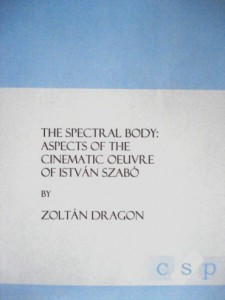 There are two very special moments in István Szabó?s oeuvre that call attention to the role of the body in cinematic representation. In the first example, at the end of Szabó?s Love Film (Szerelmesfilm, 1970), a blinding light ?draws? the contours of a female face looking into the camera, at the audience. The character recounts her past some months and, significantly, the trauma of losing her baby. Then her face dissolves into the blinding white light again. The other example is from the Academy Award winner film, Mephisto (Mephisto, 1981), where?again at the end of the film?the focal character is chased around on an empty stage and is finally caught by the spotlights. He turns to face the camera and addresses the audience in his despair. Then his body starts to dissolve into the light apparently emitting from within his own body, and gets petrified by the end as an X-ray of his own body, with fading contours.
There are two very special moments in István Szabó?s oeuvre that call attention to the role of the body in cinematic representation. In the first example, at the end of Szabó?s Love Film (Szerelmesfilm, 1970), a blinding light ?draws? the contours of a female face looking into the camera, at the audience. The character recounts her past some months and, significantly, the trauma of losing her baby. Then her face dissolves into the blinding white light again. The other example is from the Academy Award winner film, Mephisto (Mephisto, 1981), where?again at the end of the film?the focal character is chased around on an empty stage and is finally caught by the spotlights. He turns to face the camera and addresses the audience in his despair. Then his body starts to dissolve into the light apparently emitting from within his own body, and gets petrified by the end as an X-ray of his own body, with fading contours.




